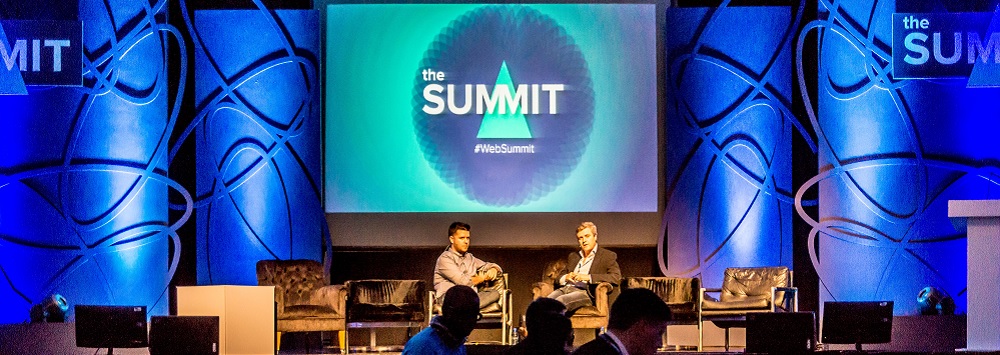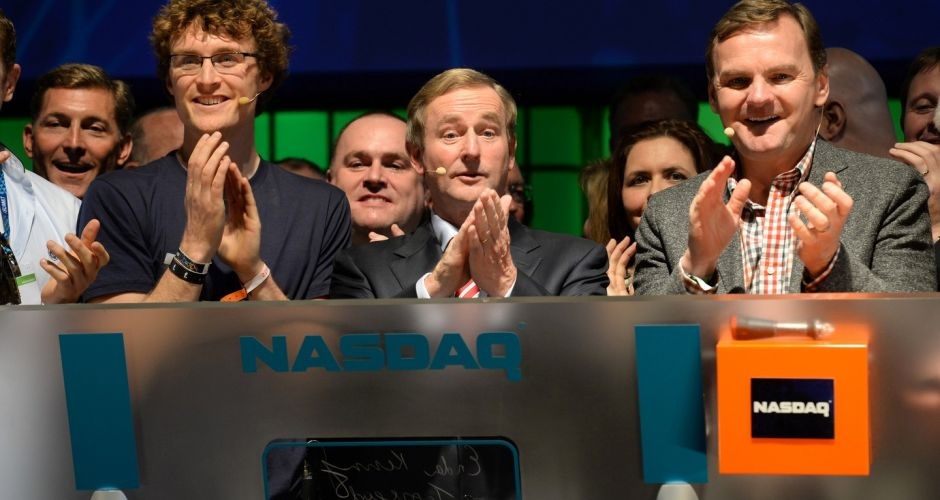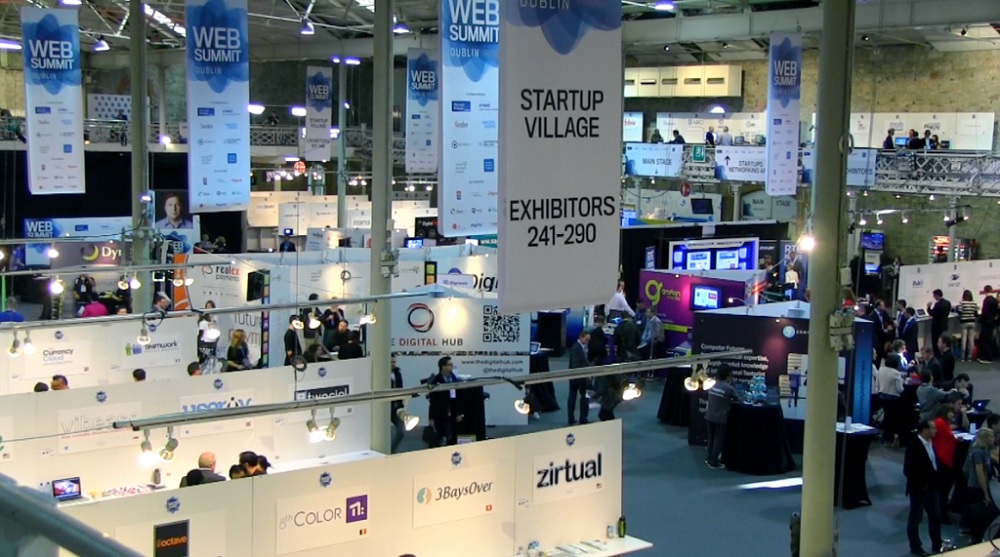There’s a lot of well-deserved attention towards this fourth and dambusting Dublin Web Summit, which took place last month, again breaking all records. In terms of calibre and content, it was second to none. At the top end were legends Elon Musk and many of the technorati all-stars. As one person aptly commented from the fair, you know you’re at a geek event when Elon Musk gets more attention than Bono. And yes, he was there too.
There’s also literally tons of content in video and media news round-ups, with no shortage of talks and news. Just try the hashtag #websummit for the low down. What’s really interesting is that the real news is what’s been emerging since the Summit, with investment conversations and announcements coming to fruition, such as Spark of Genius Award winner SmartThings winning another $12M in investment, after it’s 3$M from last year’s conference. I’ve included a link to Silicon Republic’s round-up of the best interview clips at the end of the article, so have a look.
Why’s the Summit so useful?
Despite the presence of seriously big names in tech and business, the Summit didn’t lose sight of the new kid innovators (yes, real kids, with one company launcher being only 13) and, moreover, giving them a place to shine. Not only is it the best shot at a break for start-ups in Europe, at least, it certainly delivers much return for the heavily subsidised participation places for start-ups, with many signing up multi-million dollar deals over the heat of the days and the few weeks since. Add to this the huge Irish welcome for all the good folk flying in, with a bespoke Summit by Night set of parties as well, and we’ve got one hell of a week of fun and finance for the future. Not to mention the tech, which brought a wash of new tech thinking and improvements on all fronts, especially in mobile. There was even a great and oversubscribed surfing and kite-surfing trip to Achill Island off Mayo on the West Coast, timed for just after the Summit whilst the parrallel F.ounders invite-only event was in full swing back near Dublin.
I asked Paul McDonnell, the main man behind the huge job of sifting through the 6,500 business applications, to see what he thought and also get a handle on what’s coming up and what companies can do about it. Rather self-affecingly and avoiding any airs of grandness, Paul admits to becoming known on the ground as The Start-Up Guy for the Summit. In fairness, this t-shirt casual ethos pervades the whole team in fact, no air and graces here – and as Robert Scobbles said himself of the event, “…everyone’s treated like a rock star….” True that.
They’re truly a receptive bunch striving hard to find the next big thing and bring it back home. There’s a well-reported youthfulness the nations’ leaders could – and do – try to tap into. The Irish Prime Minister, Enda Kenny, himself, was on hand too and not just for the photo shoot. He was around on-and-off over the two-day conference, a testament to the strength of the organizing team and Irish Government’s inward investment agencies, Enterprise Ireland and the Industrial Development Authority. Also in active mode was the novel entity, Connect Ireland, which rewards citizens with cash bonuses for each new job they help create in Ireland by introducing foreign companies to local hosts, with quite some success already I am told.
Connecting Irish style
From the outset, I’ve always known Paul and the team were really working hard to deliver great value – if only to ensure the richest bed of new talent could get a look in, too. Though it was the appointment of Rob Farhat – Summit’s first artistic director – who put together a brilliant Summit by Night programme aimed unashamedly at topping Austin’s SXSW legendary series of nights, with a distinctly Irish flavour. It was a brilliant success on every level.
Focusing on the start-ups, Paul and his team in the last months personally undertook the difficult job of talking to and investing time in thousands of companies applying for the START Top 150 programme, with the best value stands at any conference – in terms of exposure, attendance and cost. They lowered the cost to display dramatically to allow 950 start-ups to set up stalls and have three delegates at the event for a fraction of the cost of regular attendee tickets. In perhaps the ultimate coup, Paddy and the lads (Irish Premier included) opened the NASDAQ exchange from the Summit, one of many notable firsts that week.
Surprisingly, you might find that there’s a lot of uncertainty in the start-ups themselves about going to the Summit. Though, in my opinion, the real benefit for having such an accessible event for start-ups is that the best ‘brains not bucks’ determine who’s able to attend. This is critical for the success of the tech sector in any country. Sheer diversity and breadth of businesses and solutions. This explains in part why the dedicated Alphaville start-up hall was as vibrant and brimming with ideas as any caffeinated stock exchange floor on the final day of term – though without the stress and with all the fun.
Summit of Many Peaks
The progress of the Summit can be seen in its rebranding from Web Summit to The Summit, along with its introduction of the Alphaville and START 150 ‘villages’. In addition, there were the various pitch stages and speed networking events, all helping connect the right faces in this beehive of activity. There was scarcely a corner that didn’t have two folk, often from differring continents, hashing out a product or business proposition, or even deal.
Home Truth – Execution is more important than ever
Of all the speakers, there was one that sent a few ripples of nods throughout the group and set tongues wagging for a while amidst the fair. The ever popular Gary Veynerchuk (@GaryVee) cut to the chase, saying we’re all marketing ‘like it’s 2009’ and holding back no punches when stating that we don’t need any more data – that technological execution, work ethic and consistency will be the new differentiators. This went down well and played to my own view that we don’t even need more ‘clever’ technology, but to find homes for what we’ve developed already.
From my own experience, I can say that there are numerous technologies looking for a home, which is perhaps the first casualty in the tech journey. I spent as much time as I could talking to many companies, trying to get their best propositions out. Though I did worry for all the ‘explanations’ and how-it-works chats I had (with no real solutions or benefits called out), there were also times when my head was spinning from all the possibilities of these ideas. Truth be told, there are some clear gaps in their product marketing and even most basic brand positions. I even jumped into one or two presentations to help them, where I could, to harness their best stories and business narratives. I tried to nurture some really excellent technical thinkers out of their comfort zones into a space that would allow them to bring investors or partners into their worlds. It was fun though, as everyone was well and truly up for it, keen to learn anything that would help unlock their next stage of growth. A nd with all credit to the various teams, you found there were no unfriendly ‘cliques’ not welcoming you to their stands, but rather an array of ‘hooks’ and luring eyes from hyped new kids looking to win you over for a minute or two. In that regard, there’s a lot of folk who deserve their fair credit – pretty much everyone in the Alphaville start-up village, for starters.
Still though, nature has a great way of sorting through to bring up the winners, so there’s always a bit of natural law at play in these events.
Branding for Start-Ups
As with all marketing, there are no fixed rules, nor should there be; to Gary’s point above, it’s more important in whatever you do to ensure you’re consistency. No noise or gaps are allowed between what you say you are and what you are as a firm or start-up. When filtering out the charlatans, we look for the noise-makers and how they fluff up their offerings, even as we look at the products and solutions. Therefore, it’s important to win confidence with demonstrable products at the earliest pitch opportunity. All too often there were some folks I’d met almost making features and uses up as the conversation swayed. And needless to say that didn’t win confidence at all, even with the great products.
Likewise, especially at the start-up level, don’t shy away and hide behind brand icons nor supposedly-clever straplines and tags. Leave that stuff to the professionals or at least till you’ve learned to sell your business, to tell it’s story, to show you’re for real. Even in this noisy haven of tech, quietly consistent delivery and humble pie (with cream), can go a long way to impress the jaded investor or partner. Save them the trouble and keep it simple, too. Having said all that, there were ample examples of true rule breakers looking to disrupt expectation, if only to start the chats. Which is as far as stunts and free pens should go.
Dining with Giants
Pulled together with sheer exuberance, in the weeks before the event, was the first (and phenomenally successful) Food Summit, which took place in the nearby gardens, right next to the main RDS complex. Here, delegates were treated to the best of Irish food – at no additional cost – to turn this once pure tech experience into a taste bud sensation, with over 60 of the Island’s top chefs in circulation to create the most impressive array of Irish food, with literally all forms of preference and health needs addressed. This to me revealed a very lateral and fantastic way to create even more buzz for The Summit. More chances to mingle, around great food, lining the tummies for more fun back in the main halls and making the most of the event. This could quite possibly easily now pivot into the world’s first Tech & Food Summit, though there are too many firsts to mention already. Though tech law firm Mason Hayes & Curran had amazing free coffee from it’s stand, the overall jury remained out for the best, as there were plenty of companies avoiding the perennial push of plastic tasting beans, with ‘The Vine Cafe’ handing out fresh brewed caffeine prizes for simple 6-second vine uploads as you ordered. Novel and consistently popular, too.
Overall, in the span of four short years, we’ve seen The Summit burst onto the tech scene as a formidable tech conference. Certainly punching above it’s weight when considered against the more established TechCrunch, Pioneer and LeWeb events, with even more plans ahead for 2014. And with the rebrand from Web Summit to The Summit, it’s clear the team have their sights on a more inclusive, agnostic type of tech summit, transcending all sectors and uniting a bigger world of ideas and innovations.
So with such ambition for the year ahead, which has already started in earnest immediately after The Summit ended (2-for-1 offers up for grabs), it’s no surprise that Paul McDonnell invites start-ups and others to start pitching their ideas already. He’s certainly living up to his name as ‘The Start-Up Guy’ for the Summit and is open for business via Twitter too @Paul_Austin. There you have it, get cracking.
On a final thought, I wanted to relay Paul’s great point about personalities and start-ups to running a business of any size or type: Just about everyone has to learn to overcome their fears or shynesses. I would add that you can’t make it if you don’t. The one thing they’ve learned is to overcome their nerves, to learn to sell their businesses and product wares. So that’s the secret of the Summit’s success, as well. Don’t be too sure of yourself and let your personality out to play once in a while – for the human game of tech will always rely on it.
Some video clips and interviews (courtesy of Silicon Republic) can be found here, with more at the Summit’s website.
Image credits: William Murphy, The Irish Times and Cpl Blog


